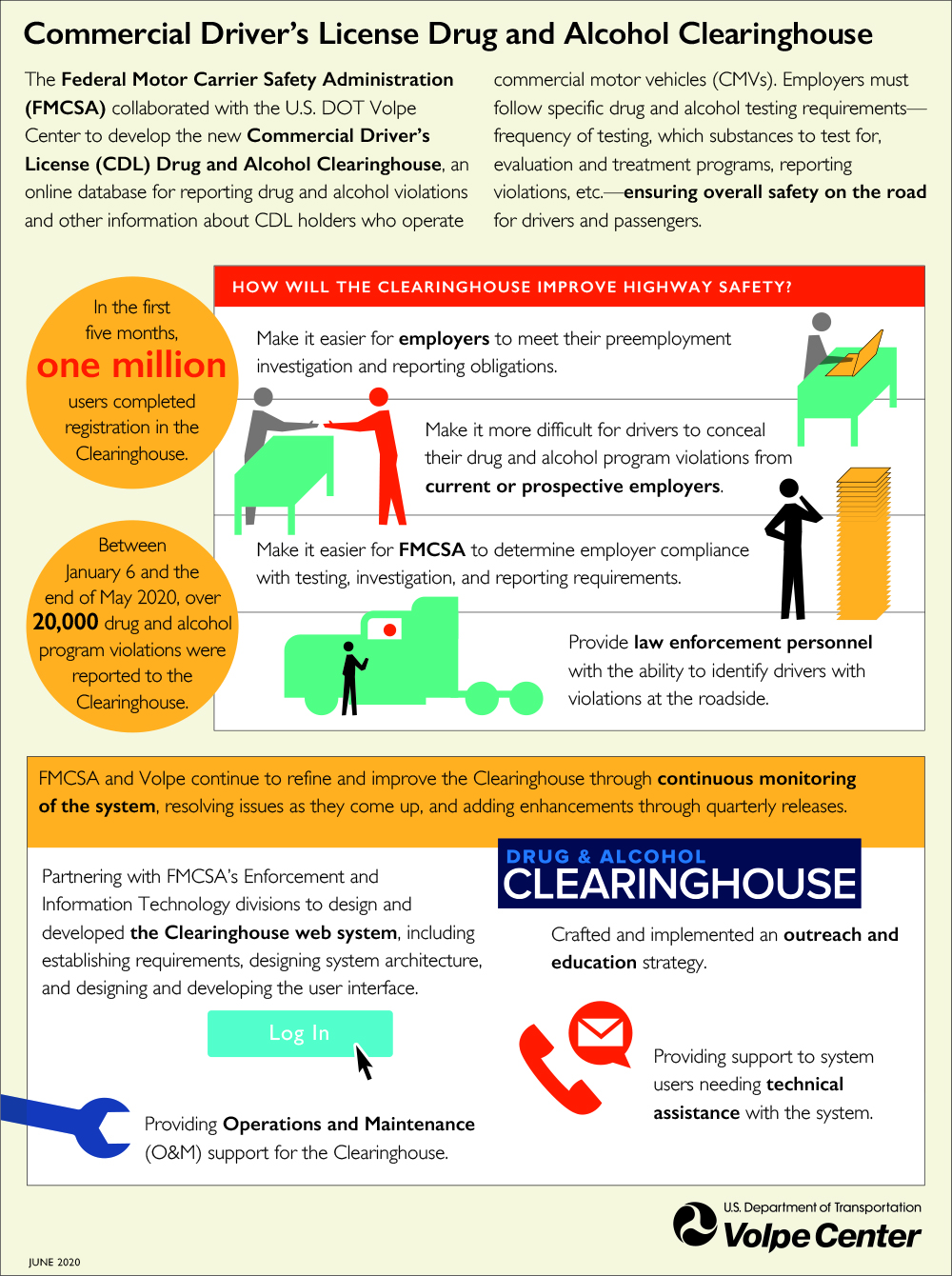Keeping Unsafe Drivers off the Road with the New CDL Drug and Alcohol Clearinghouse
To advance the Federal Motor Carrier Safety Administration’s (FMCSA) mission of reducing crashes, injuries, and fatalities involving commercial motor vehicles (CMVs), FMCSA requires CMV drivers and their employers to follow certain rules regarding drug and alcohol testing. These requirements address the frequency of testing, which substances to test for, evaluation and treatment programs, and reporting violations. These measures are in place to ensure the safety of all vehicle operators and passengers.
Drivers who violate these rules may be prohibited from operating a CMV.
Up until January 2020, this system depended greatly on employees to self-report their violations, and on previous employers to report such information upon request during pre-employment screenings. This system proved to be time consuming and opened the door for inaccuracies in reporting.
Creating a New Streamlined System
To remedy this, FMCSA officially launched the Commercial Driver’s License (CDL) Drug and Alcohol Clearinghouse, an online database for reporting violations and other information about CDL holders, related to FMCSA’s drug and alcohol testing program.
The aim of the Clearinghouse is to provide a central location where employers can more quickly identify drivers with possible drug and alcohol program violations, including those who deliberately hide violations, and those drivers’ behaviors can be addressed before they are able to operate CMVs again. It also aims to give law enforcement the ability to identify drivers with violations at the roadside.
FMCSA’s Enforcement and Information Technology Divisions partnered with the U.S. DOT Volpe Center to design and develop the web system, including the requirements, system architecture, and user interface.
The Volpe Center team also provides operations and maintenance support and helped create and implement an outreach and education strategy. In addition, the Volpe team continues to assist in providing direct technical support to users of the Clearinghouse.

Keeping the Nation’s Roads Safe
Between the launch of the website on January 6, 2020, and the end of May, more than 20,000 drug and alcohol program violations were reported in the Clearinghouse, including more than 16,700 positive substance abuse tests. During that period, about 14,000 drivers were prohibited from operating a CMV due to a violation.
Because employers no longer have to rely on drivers or their previous employers to report violation information, it is easier for employers to ensure they have proper, accurate information in order to keep the nation’s roads safe.
By the end of May, one million users had completed registration for the Clearinghouse—that number keeps rising, as more users register every day.
“We’ve seen encouraging results from the Drug and Alcohol Clearinghouse, but there’s still work to do to ensure we identify more drivers who should not be behind the wheel,” said FMCSA Acting Administrator Jim Mullen. “The Clearinghouse is a positive step, and the Agency continues to work closely with industry, law enforcement, and our state partners to ensure its implementation is effective.”
Implementing Ongoing Enhancements
FMCSA and the Volpe Center continue to work diligently on this project; the development team is monitoring the system, resolving issues as they are detected, and adding enhancements through periodic releases, and the support team is assisting users directly with any technical issues they may face.
To learn more about the U.S. DOT Volpe Center’s safety management and analysis practice, please contact Volpe Center Director of Safety Management and Human Factors Maura Lohrenz.
Celebrating 50 years of transportation innovation for the public good, the U.S. DOT Volpe Center’s mission is to help the transportation community navigate its most challenging problems.
